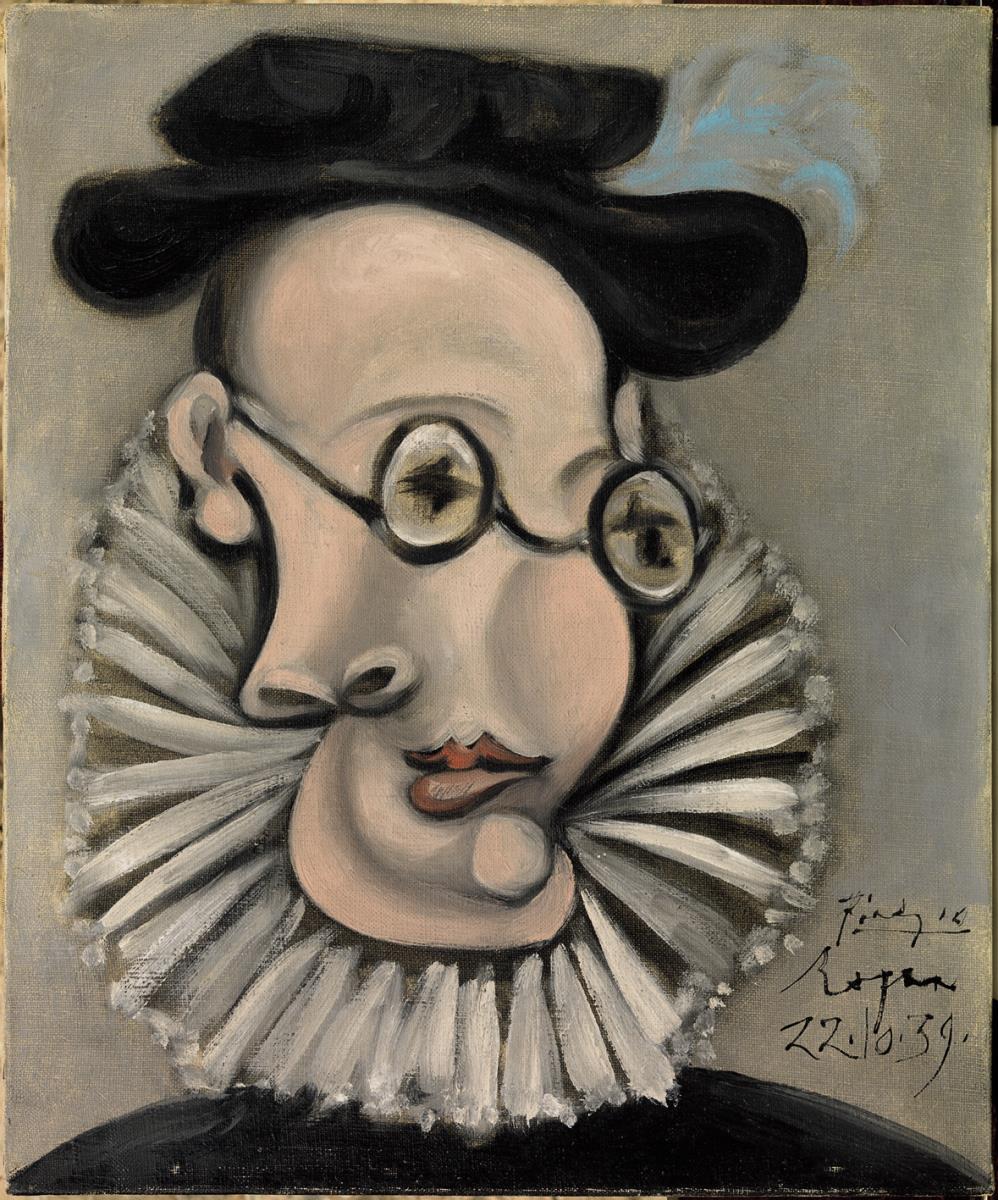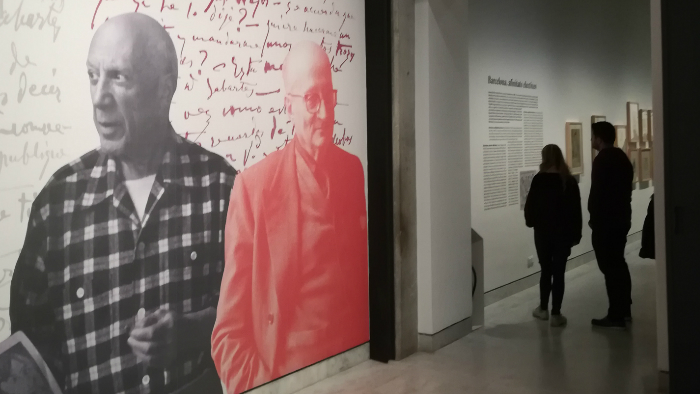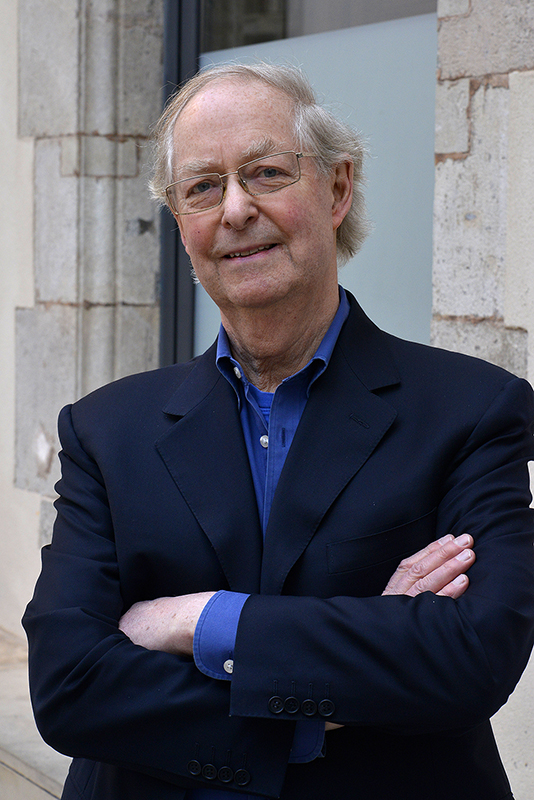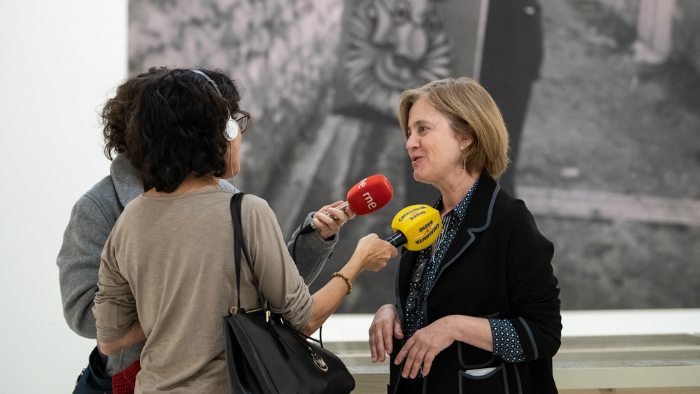Jaume Sabartés with Ruff and Bonnet
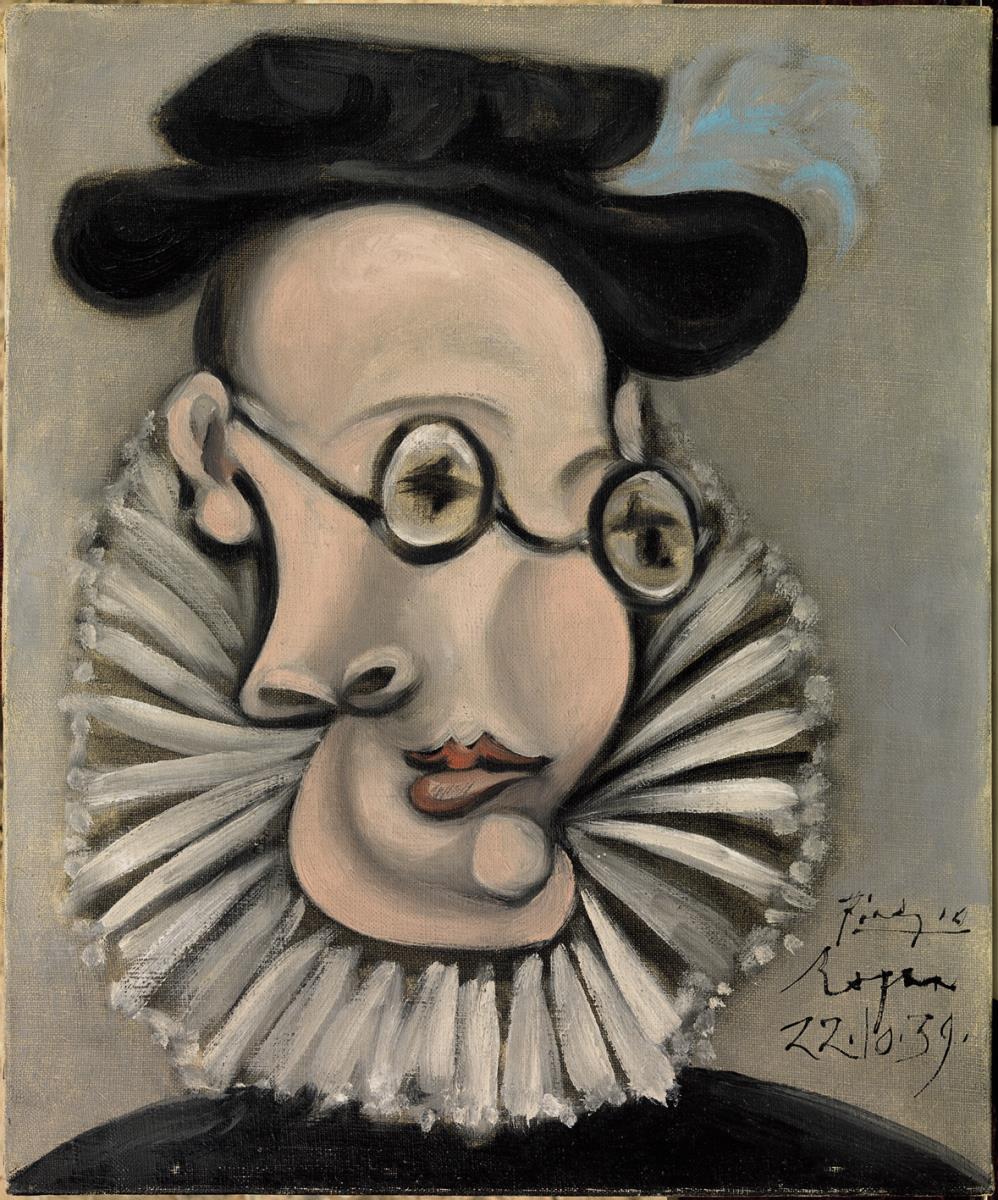
Jaume Sabartés with Ruff and Bonnet
Jaume Sabartés with Ruff and Bonnet
This portrait of Jaume Sabartés was painted during the second stage of their friendship, which began in 1935 when Picasso asked him to become his secretary. In 1939, before the imminent outbreak of the Second World War, Picasso sought refuge in the spa town of Royan on the French Atlantic coast, where he lodged with Dora Maar and Sabartés, and rented a house for his mistress Marie-Thérèse Walter and their daughter Maya.
By the end of 1938 Sabartés had already conveyed to Picasso his desire to be portrayed as a «knight of the period of Philip II», fully aware that the artist would readily agree. The request gave rise to a couple of portraits that now belong to the Museu Picasso, the second of which, dated Christmas 1938, clearly anticipated this work. In answer to his friend's wish, on 22 October 1939 Picasso executed this oil painting in Royan, in the portraiture style he was exploring at the time and which consisted of distorting the human figure, particularly the face, in a deliberate randomness that enables the viewer to recognise the sitter in spite of the shapelessness. Picasso stresses the character’s short-sightedness and the paleness of his flesh to highlight the comical nature of the portrait.
Sabartés himself referred to the picture as follows: «The fact is that my portrait has all the qualities of my facial features, but only the most essential, and if Picasso has assembled them in a different way to how most people see them this is because he painted them from memory, thinking of me, arranging them according to his sensitivity and with the intention of creating a harmonious work». The past is evoked in the attributes of the figure but also in the range of colours, slightly reminiscent of the palette used in the Golden Age of Spanish painting, barely contrasted with the red of the lips and the blue of the feather decorating the velvety hat.
This drift towards distortion in Picasso’s oeuvre had sought inspiration from his female companions of the period, Dora and Marie-Thérèse, the former portrayed through sharp angles, triangular shapes and broken lines, and the latter through curved, sensuous lines, much like those used in this portrait of Sabartés. This work is mirrored in "Portrait of Émilie-Marguerite Walter" (private collection), a likeness of Marie-Thérèse Walter's mother, who was staying in Royan with her daughter and granddaughter, and which was painted the day before the portrait of Sabartés.
Located in
CP Sala 0146 cm x 38 cm
Gift of Jaume Sabartés, 1962
MPB 70.241

